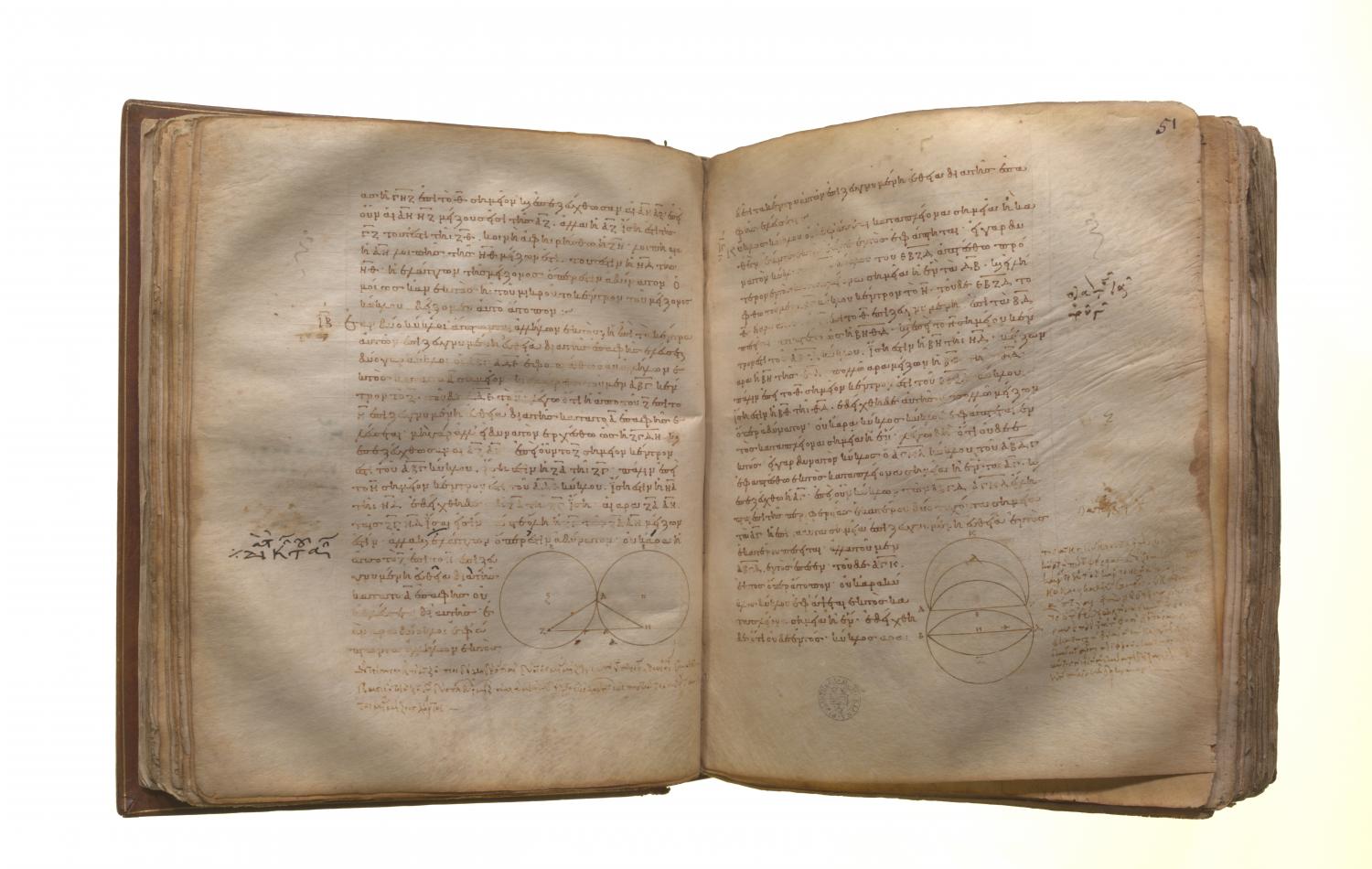Translations
If two circles touch one another externally, the straight line joining their centres will pass through the point of contact. For let the two circles ABC, ADE touch one another externally at the point A, and let the centre F of ABC, and the centre G of ADE, be taken; I say that the straight line joined from F to G will pass through the point of contact at A. For suppose it does not, but, if possible, let it pass as FCDG, and let AF, AG be joined. Then, since the point F is the centre of the circle ABC, FA is equal to FC. Again, since the point G is the centre of the circle ADE, GA is equal to GD. But FA was also proved equal to FC; therefore FA, AG are equal to FC, GD, so that the whole FG is greater than FA, AG; but it is also less [I. 20]: which is impossible. Therefore the straight line joined from F to G will not fail to pass through the point of contact at A; therefore it will pass through it.
